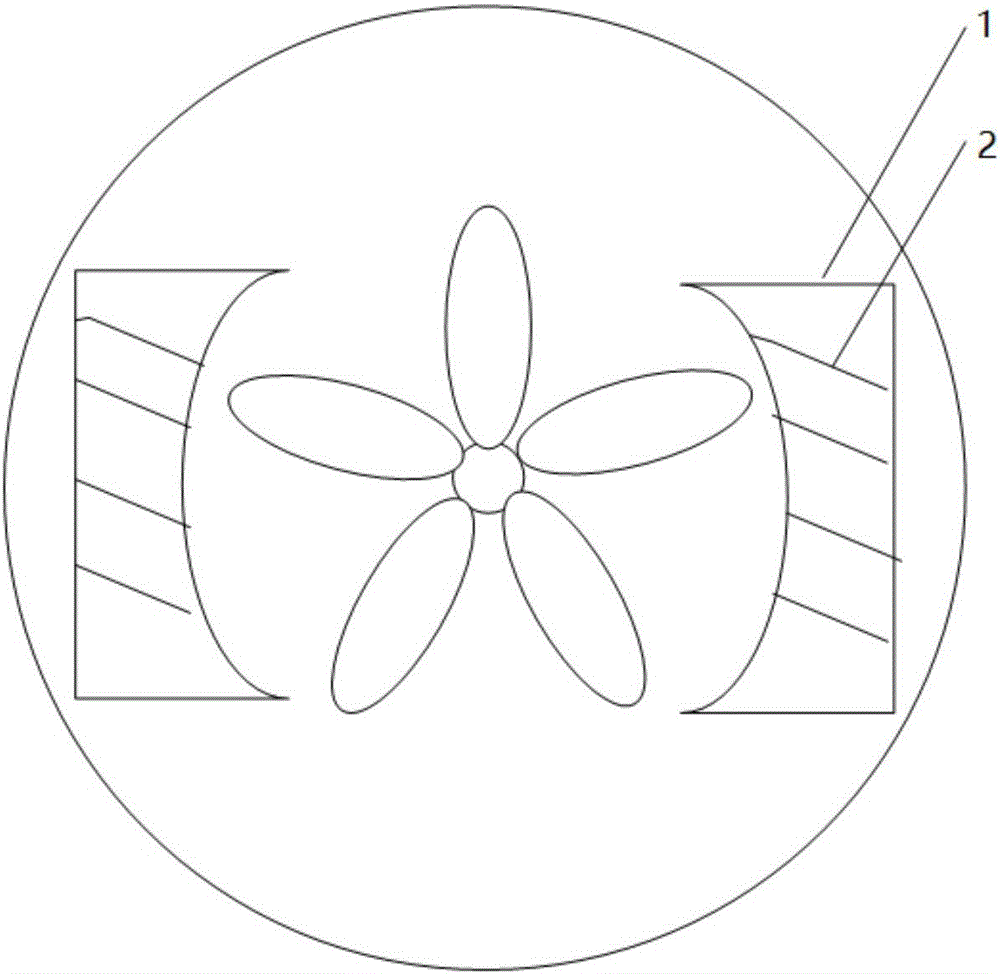Novel electromagnetic multi-rotor aircraft based on turbine engine and control method thereof
A multi-rotor aircraft and turbine engine technology, applied in the field of control, can solve the problems of multi-rotor aircraft control difficulties, low energy reuse rate, etc., and achieve the effects of improving energy utilization rate, rich flight attitude, and accurate control mode
- Summary
- Abstract
- Description
- Claims
- Application Information
AI Technical Summary
Problems solved by technology
Method used
Image
Examples
Embodiment 1
[0049] Add electromagnetic modules and batteries to turbojet engines to form a new control structure for multi-rotor aircraft, such as figure 1 . The structure diagram of ducted fan is as follows: figure 2 As shown, 1 is the magnet located around the ducted fan, and 2 is the excitation coil wound on the magnet. Wherein 3 is an induction coil, and 4 is a ducted fan (bearing) of a multi-rotor aircraft. The present invention places an induction coil 3 at the center of the ducted fan bearing 4 to generate electric current and store it through a storage battery 6 . Such as image 3 As shown, 4 of them are ducted fan (rotor) bearings, such as Figure 4 Shown, 5 is also fan bearing, and 6 is variable resistance, and 7 is central accumulator, and accumulator is installed in the ducted fan (rotor) center of multirotor aircraft. The present invention consists of multiple Figure 4 rotor assembly. The permanent magnet adopts neodymium iron angle boron with extremely high magnetic ...
Embodiment 2
[0051] When the multi-rotor aircraft decelerates, a magnetic field is formed when the excitation coil is energized, and at the same time, the ducted fan acts as an armature to rotate and cut the magnetic field lines to generate eddy currents. The eddy currents in the armature interact with the magnetic field to create a braking torque. The excitation coil and the magnet constitute the stator, and the fan acts as the rotor to cut the magnetic induction line to achieve the effect of braking.
[0052] The excitation coil is the part of the control circuit. When working, it is connected with direct current to form a magnetic field. The excitation coil is fixed on the magnetic pole and forms a whole with the magnetic pole as a stator. It will generate heat during operation, so high temperature resistant electromagnetic wire is used. A DC current is passed into the coil, so there is a magnetic flux phase link between the rotor and the stator, so that the rotor is in a closed loop of...
Embodiment 3
[0055] For the multi-rotor aircraft structure described in Scheme 1, through the variable resistance in the loop between the central battery and each rotor, the current in the ducted fan (rotor) is changed to control the rotation speed of the rotor. When a certain rotor of the aircraft needs to increase the lift, the resistance can be reduced so that the current increases to drive the rotor to have a greater rotational speed and form a greater lift. At the same time, when the attitude of the multi-rotor aircraft needs to be fine-tuned, it is only necessary to change the size of the resistance to ensure the balance of the multi-rotor flight. In addition to adjusting the attitude of the multi-rotor aircraft and fine-tuning its balance, the electric energy in the central battery can provide power for other parts of the multi-rotor aircraft.
[0056] The way to realize the flight attitude is:
[0057] 1) Descent: The airflow to all airway valves decreases, the airflow to the roto...
PUM
 Login to View More
Login to View More Abstract
Description
Claims
Application Information
 Login to View More
Login to View More - R&D
- Intellectual Property
- Life Sciences
- Materials
- Tech Scout
- Unparalleled Data Quality
- Higher Quality Content
- 60% Fewer Hallucinations
Browse by: Latest US Patents, China's latest patents, Technical Efficacy Thesaurus, Application Domain, Technology Topic, Popular Technical Reports.
© 2025 PatSnap. All rights reserved.Legal|Privacy policy|Modern Slavery Act Transparency Statement|Sitemap|About US| Contact US: help@patsnap.com



